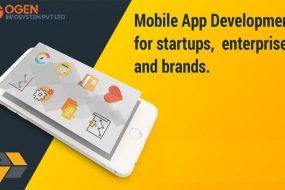
People enjoy using their smartphones because they can accomplish many things on the go such as reading emails, socializing, watching movies, and much more. We enjoy smartphones because they have many apps that make everyday tasks easier.
If you are considering developing a mobile app market, an important decision is to decide between making a native application or a hybrid.
An old question that you don’t want to leave, we thought it was time to visit again… Which is better?
Native over Hybrid
Creating native programs means using the native platform language, Objective-C on iOS, and Java on Android. The main advantage of native applications is its functionality. Native apps are integrated into machine code, which provides the best performance you can get from a mobile phone. Excellent performance includes fluid and full access to phone hardware and fast animation, multi-touch support, and the latest APIs.
Native development is by no means easy. Without the sheer number of resources available, it may be incomprehensible to everyone. Since the code must be written directly for each platform, the same code will need to be rewritten with the minimum distribution. The concept may be the same, but the language, APIs, and development process are different. This process can be very long for complex applications.
Going Native
If you are new to mobile development and want to use native APIs or build a mobile application, you will need a good resource for native mobile development. Let’s take iOS for example. If you want to become a traditional iOS developer, first get yourself a Mac, the Mac is required to create code in an app like the Developer Account for iOS ($ 99 per year).
You can get a great introduction to Objective-C by creating your Flappy Bird game in your browser. One online course will not be deceptive yet, Apple offers its own tutorial that helps beginners and experienced developers. This tutorial introduces application design, design, and code implementation while developing the To-Do List app.
Hybrid over Native
Hybrid apps are web applications (or web pages) in a traditional browser, such as UIWebView in iOS and WebView in Android (not Safari or Chrome). Hybrid applications are built using HTML, CSS and Javascript, and then integrated into a traditional application using platforms like Cordova. This allows you to use any web-native framework you want, and there are many more of these.
Application development is fast, easy, fast, and easy to maintain. You can change platforms anytime you need, Cordova lets you build your own more than one platform app with one line of code add-on. When it comes to phone hardware such as a camera or Bluetooth, Cordova has a huge range of plugins that you can use.
The biggest problem with hybrid apps is that they are still dependent on the traditional browser, which means they are not as fast as native apps.
Going Hybrid
If you have decided to develop integrated systems, then you should know that there are two major ‘competitors’ in this field. One is Cordova (with Cordova-based tools like PhoneGap) and the other is Appcelerator Titanium. They both point to mobile platforms but work in very different ways.
Upgrading with Cordova is like upgrading a web page. Creates local HTML, CSS, and JavaScript files scans them in the browser, and wrap them in native web views with Cordova (you will still need native SDKs and development tools for this step).
Using Titanium is a bit different, you don’t have any HTML and CSS files unless you want to create an application that uses native User Interfaces and HTML. Titanium provides the most useful mobile tools that help you copy (or mimic) your app on a real platform, not a browser. When your app is used on a device, it is not threatened with web viewing but is translated by a Javascript engine (JavaScriptCore on iOS or Rhino on Android). Appcelerator provides great tutorial (surprisingly not a ToDo application).
There are also a few other unknown hybrid development options like Xamarin, Rho, Corona and MoSync. All of this works in slightly different ways and can be very helpful depending on your current editing experience.
Conclusion
Both native and hybrid are ways to meet the diverse needs and preferences of users and developers, and none of them can be considered a viable solution. They have their strengths and weaknesses and it is up to you to decide which one is best for you and which one to use in your application.
OGEN Infosystem is one of the most trusted website designing company, offering website designing, re-designing, web development & website promotion. We can help you set up your business online from designing an informative website to developing custom web portals and apps.
Need Help?
For any issues you can send us an email at store@ogeninfo.com also let us know if you want to discuss your WordPress project, you can ping us anytime at ogeninfosystem@gmail.com














